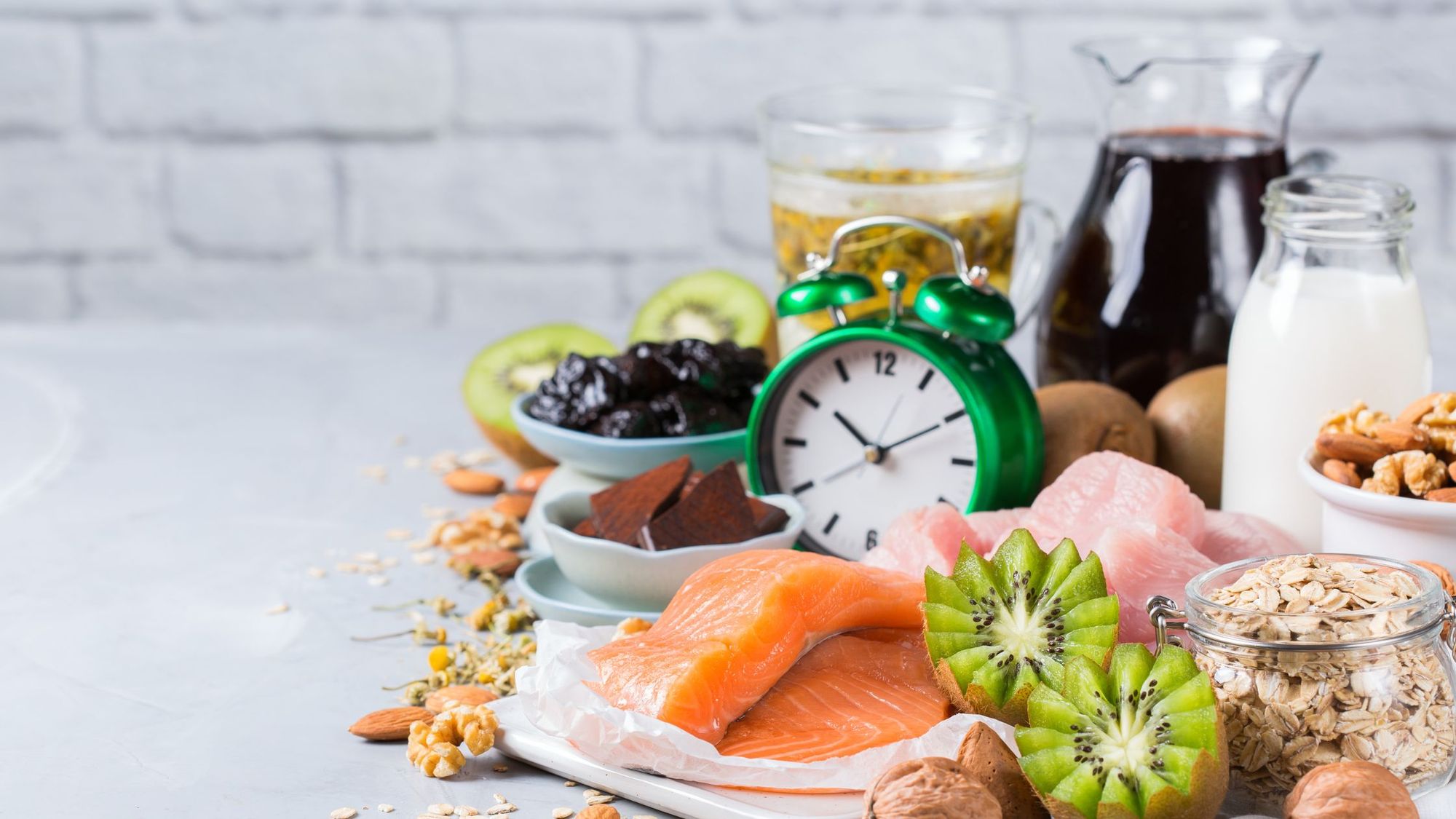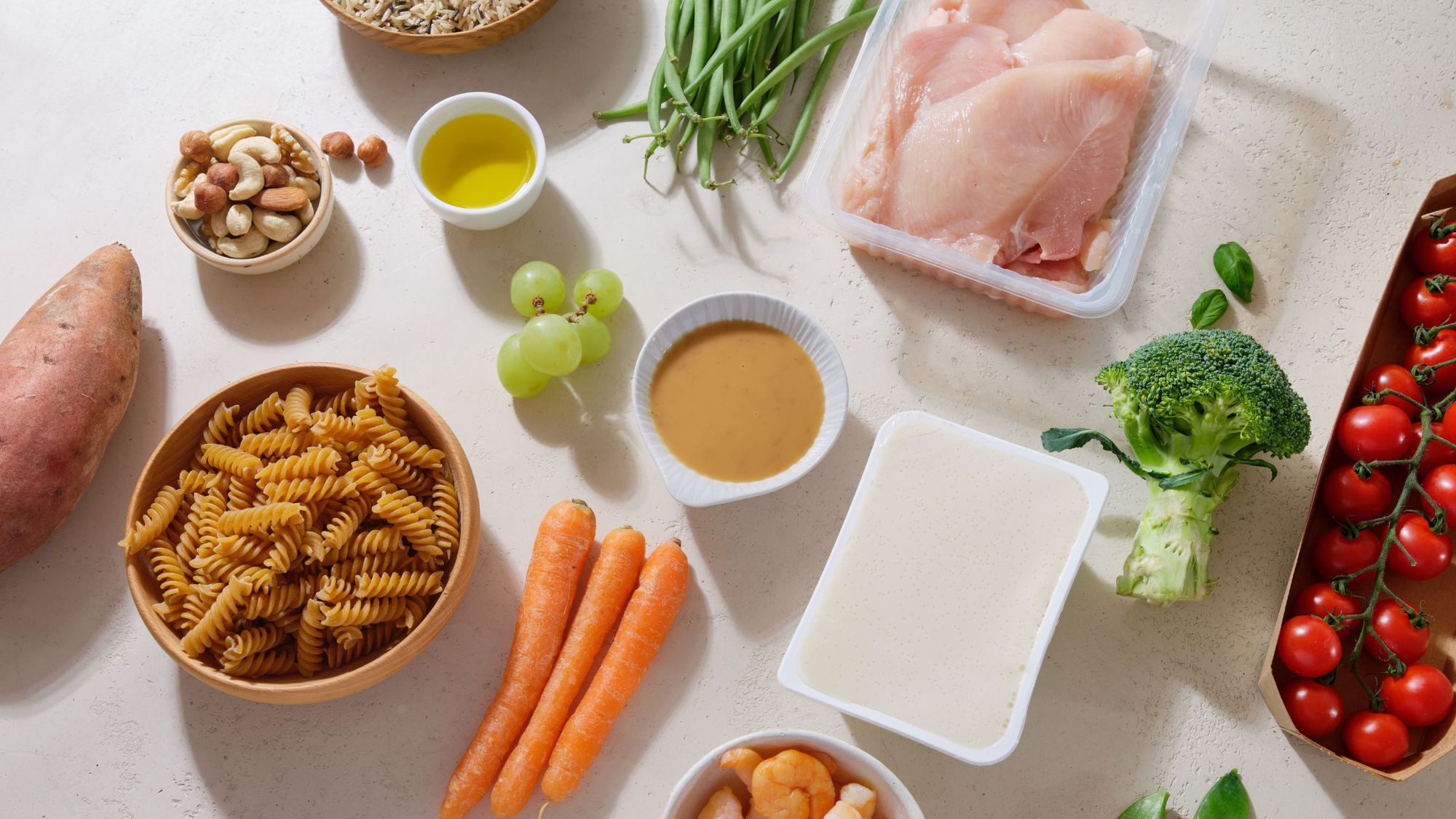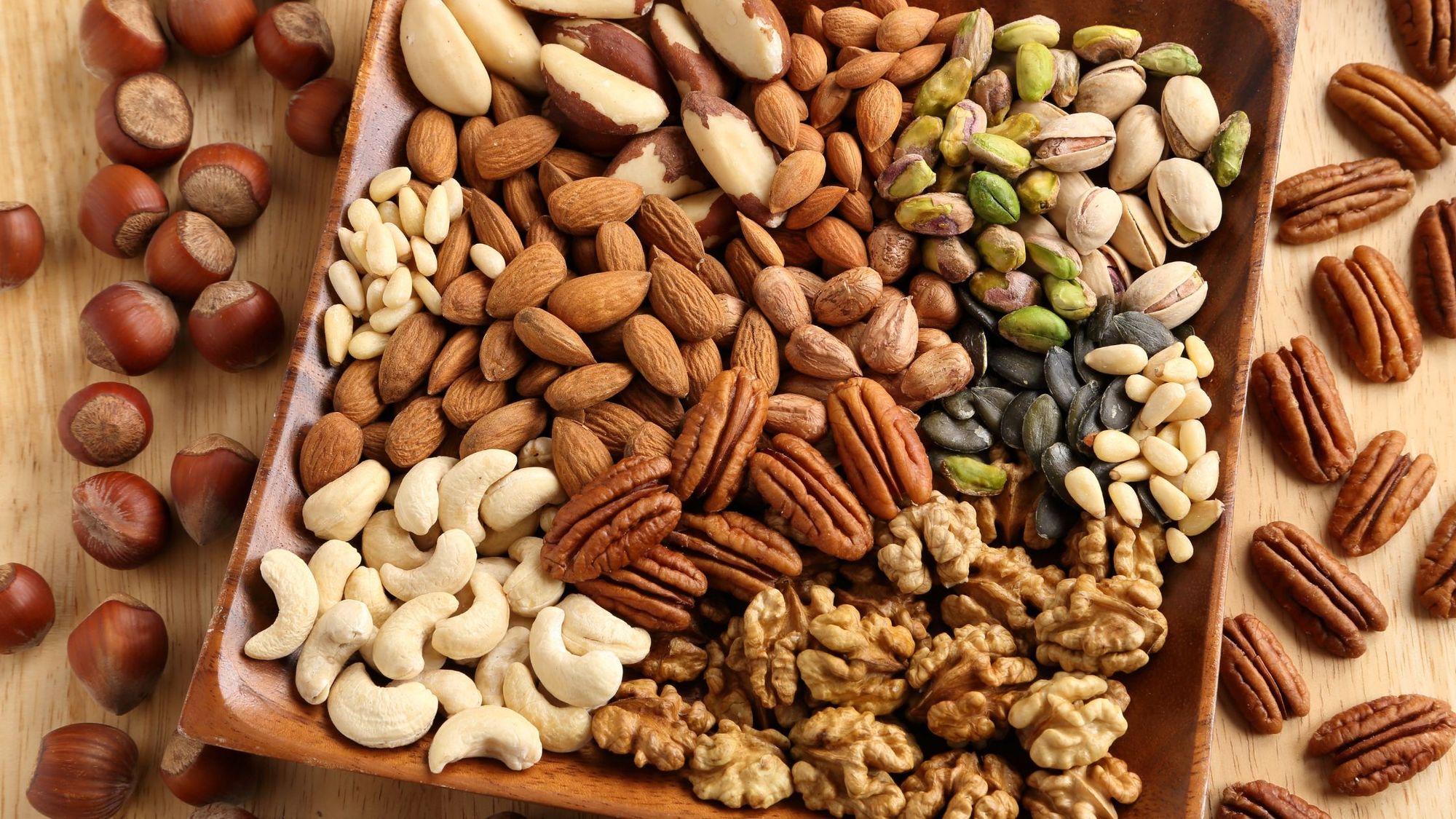
Eating more hormone-supporting foods – as in, foods that balance hormones – could be a game-changer for your health and wellness. This is because there are many ways hormonal imbalances in the body can negatively impact your health. Having levels of certain hormones that are too high or too low are considered hormonal imbalances.
When your hormone levels are irregular or imbalanced, you could experience symptoms of poor hormonal health such as weight gain, acne, trouble sleeping, anxiety, depression, hair loss, fatigue, mood swings, and much more.
If you’ve been experiencing symptoms like these and you suspect it’s a hormonal health issue, speak to your doctor about ordering a blood test to check your hormone levels.
Hormonal imbalances are incredibly common, so it’s safe to go ahead and start eating hormone-supporting foods that balance hormones in advance of your blood test results, to start correcting possible imbalances.
Did you know that changing your diet could help improve your hormonal health?
Your Diet and Hormonal Health
In her fascinating book, Fast Like a Girl, Dr. Mindy Pelz explains that while most of us have been conditioned to primarily look at the number of calories per serving when we review a nutritional label, calorie counting is not something that will support our hormonal health.
Ingredients, on the other hand, matter a lot when it comes to hormonal health. Dr. Pelz advises, “Train yourself to go to the ingredient list first. Good healthy ingredients like healthy oils, organic fruits and vegetables, and grass-fed proteins support great hormonal production.”
This is a key piece of advice for those looking to eat foods that balance hormones: know which foods or ingredients to avoid, as synthetic ingredients and chemical-laden foods won’t help you improve your hormonal health.
When reviewing the ingredients before you buy something, Dr. Pelz explains that “chemical-laden ingredients have been associated with altering your natural hormone production and contributing to metabolic disease.”
Her other tips for how to review a list of ingredients and decide if it’s healthy include:
- The fewer ingredients, the better. The longer the list of ingredients, the more likely it is that there are fake or chemical-laden ingredients. Once the ingredient list is higher than 5 ingredients, the more likely it becomes that chemicals have been added.
- If sugar is listed as one of the first four ingredients on the nutritional label, it’s probably not a great idea to buy the item.
- Do you recognize the ingredients? If you can’t pronounce it or you don’t know what the ingredient is, there’s a high chance that it’s a synthetic ingredient.

Toxic Ingredients to Avoid for Optimal Hormonal Health
It would take all day to list all of the toxic ingredients to avoid. However, we’re going to list some of the top toxic ingredients seen in food products today.
Dr. Pelz explains that times have changed when it comes to safe eating: “A harsh truth is that gone are the days when all the ingredients in foods were safe. For many food companies, shelf life and profits have become more of a priority than your health, which is why we have seen an uptick in toxic ingredients in our foods. Some of these may look familiar to you. Pesticides, preservatives, dyes, and artificial flavors are all common food label ingredients. A good rule of thumb is that if you can’t pronounce it, chances are it’s a chemical.”
Below are some examples of toxic ingredients to avoid for optimal health (and optimal hormonal health).
- Nitrates and nitrites
- Sorbitol
- Sodium aluminum phosphate
- BHA and BHT preservatives
- Propylene glycol
- Diglycerides
- Benzoic acid
- Monosodium glutamate
- Artificial food coloring
- MSG
- High fructose corn syrup
Again, there are many other harmful ingredients aside from this list. When in doubt, only buy foods with a few ingredients that you recognize.
Stay Away From Grocery Store Aisles to Find More Foods That Balance Hormones
Have you ever noticed that most of the healthy food in a grocery store is located in the perimeter of the store? When you think about where the bins of healthy produce are located, as well as the meat and fish section – it’s always the perimeter of the grocery store that has the healthiest foods.
The aisles are where you’ll find processed, packaged, chemical-laden foods that could disrupt your hormonal health and cause other health issues such as obesity.
Whole foods are healthiest, and that’s because there’s just one ingredient. There’s never a nutritional label on an apple or a cucumber, which makes it a whole food.
There are many whole foods that balance hormones and are great for hormonal health, which we’ll dive into next.

Hormone-Supporting Foods
Dr. Mindy Pelz that many of our hormones, such as estrogen, progesterone and testosterone, are important to keep balanced and yet they are greatly impacted by the foods we eat.
She explains, “Estrogen thrives when you keep glucose and insulin low. If estrogen were doing the ordering, it would request a salad over a sandwich. Bread spikes your blood sugar, which is not to estrogen’s liking.”
A low-carb diet such as the keto diet can help regulate your body’s estrogen levels. It’s important to read about how low estrogen (and therefore a hormonal imbalance in your body) can impact your physical and mental health.
Dr. Pelz explains, “Outside of keeping your carbohydrate load low, there are several foods that estrogen would love for you to add in. The first is good fats, specifically foods that are naturally high in cholesterol. Cholesterol is a precursor to making estrogen, and any food that supports healthy cholesterol production is a win for estrogen. If the thought of raising cholesterol levels scares you, remember there is good cholesterol and bad cholesterol.”
Estrogen-supporting foods include foods that contain good cholesterol, which is HDL cholesterol (high-density lipoprotein). The bad cholesterol is the LDL cholesterol (low-density lipoprotein).
Below is a list of other foods that balance hormones and support healthy estrogen levels:
- Organic soybeans
- Avocados
- Olive oil and sesame seed oil
- Almonds, cashews, brazil nuts, pine nuts, walnuts
- Pumpkin seeds, sunflower seeds, sesame seeds
- Chickpeas, lima beans, kidney beans, mung beans, pinto beans, black-eyed peas, lentils
- Blueberries, strawberries and cranberries
- Cabbage
- Spinach
- Onion
- Zucchini
- Broccoli
- Cauliflower
Notice how estrogen prefers a lot of healthy fats, nuts, seeds, and legumes. Soy is one of the top ingredients for healthy estrogen levels. Try to eat some organic tofu, edamame, or other healthy soy-based foods.
Below is a list of foods that support healthy progesterone levels:
- Brussels sprouts
- Cauliflower
- Broccoli
- Bananas
- Mangoes
- Papaya
- Grapefruit
- Lemons
- Oranges
- Sunflower seeds, sesame seeds and flax seeds
- Black beans, kidney beans and chickpeas
- Butternut squash, acorn squash, honeynut squash, and spaghetti squash
- Sweet potatoes, yam, and red potatoes
- Beets
- Turnips
- Fennel
You’ll notice that progesterone likes a lot of complex carbohydrates (healthy carbs) and cruciferous vegetables.
Hormone-Feasting Days are High-Carb Days That Will Kick You Out of Ketosis, But That’s Okay
Since progesterone likes complex carbs, Dr. Mindy Pelz explains that anyone on the keto diet should have ‘hormone-feasting days’ where they give their body the carbs it needs. This will kick you out of ketosis for those few days, but that’s okay. Eating foods that balance hormones is sometimes the priority over eating low-carb foods. Dr. Pelz explains, “Hormone feasting days are going to increase your blood glucose levels and most likely will kick you out of ketosis. This is intentional. This is important for progesterone production. Hormone feasting also allows you to eat more fruits, including berries, apples, citrus, and tropical fruits, giving your gut microbes new fuel that it does not get on your ketobiotic days.”
It’s best to focus on nature’s carbohydrates such as root vegetables, bananas, papayas and mangoes.
High-carb days are part of a carb cycling eating regimen many health gurus swear by.
So, when should your high-carb days or ‘hormone feasting days’ begin? For women, it’s best to align this with your menstrual cycle.
Dr. Pelz explains, “When hormones are peaking at ovulation and a week before your period, you want to feed them, so you move into hormone feasting foods. When your hormones are at their lowest levels, during the first 10 days of your menstrual cycle and the 5 days post ovulation, you want to go into ketobiotic to keep insulin low. The switch between these two styles of eating lets you mimic the feast/famine cycling your primal ancestors thrived on, all timed perfectly to your hormonal needs.”
Final Tips on Creating the Right Diet Plan For You
Creating the optimal diet plan for you depends on various factors such as your gender, your genetics, and your food sensitivities.
Gender matters because women and men have different hormonal health needs, and women should align their hormone feasting days with the fluctuating hormones during their menstrual cycle.
Genetics matter because the optimal diet plan for you will depend on your genetic makeup. Everyone has different needs for different vitamins and minerals, depending on their DNA. To uncover this information and find the best diet plan for you, take a CircleDNA test and read your genetic diet and nutrition reports.
Most of you are already aware of any food sensitivities or food intolerances you have, so you’ll already know which foods that balance hormones are safe to eat. However, if you’re not sure, you can always take a blood test for food sensitivities by requesting one from your doctor or naturopath. Your DNA test results will also indicate any genetic risk of certain food sensitivities. It’s important to learn which foods your body can’t handle before coming up with a diet plan.
References:
Fast Like a Girl: A Woman’s Guide to Using the Healing Power of Fasting to Burn Fat, Boost Energy, and Balance Hormones by Dr. Mindy Pelz






Comments are closed.